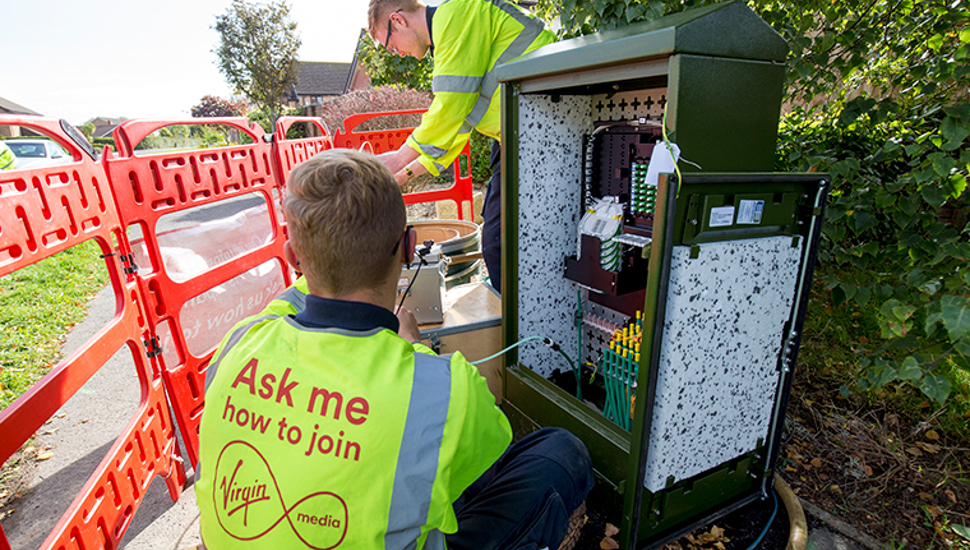How to get broadband without a landline
If you want to get broadband without a landline this guide will give you everything you need to know

On the hunt to get broadband without a landline? You've come to the right place. The first thing to know is that this is not only possible but there are lots of options available to you. That means you could end up with faster internet and paying less than now.
Yes, a lot of broadband providers do require you to have a landline in order to get broadband – BT, we're looking at you. But for those that either can't get or don't want a landline installed, there are options to get around this requirement.
In fact, in the age of smartphones the need for a landline phone is less than ever. Combine that with the use of fibre optic cables for the fastest internet and those old copper phone lines seem more defunt than ever. So how do you find the right service for you?
A good place to start, or end up after reading this, is our broadband deals guide which lays out lots of options for broadband including those without a landline.
Below we'll explain all you need to think about and look out for when trying to get broadband without a landline.

What is a landline and why do I need one?
A landline is a copper cable that runs under the ground connecting homes and the national phone network. Most of these are laid, maintained and owned by BT, or Openreach. Originally and still in some cases, these wires were used to transmit data. Since the metal in these creates resistance they are limited on how much data can be shared, which is why the theoretically limitless fibre optic light-transmitting cables of modern broadband are taking over.
That said, for Fibre To The Cabinet broadband, while fibre is used to the local cabinet, it is then run locally to your home using traditional copper cabling. In these cases you'll need that phone line to get connected.
Companies like BT always required you to have a landline installed, simply because you needed that cabling for a connection. But if you're now going for a fibre cable connection (Fibre To The Premesis), that phone line isn't physically needed anymore.

Virgin and Hyperoptic broadband: landline-free option
When it comes to fibre broadband, you won't need to have a phone line installed and, since it's fibre right to your router, it'll be the fastest possible connection. This is the case with Virgin Media and Hyperoptic broadband.
Both of these companies have been investing years of time and lots of money into creating their own physical fibre cable networks across the country. As such you can have them piped directly into your home – presuming you live in an area where it's available – without the need for a landline.
As a result of the massive cost involved in creating and running these networks, prices can sometimes be higher than paying for broadband and a landline. But for the speeds you get it can often be worth that extra spend. And if you look out for the best fibre broadband deals you could even make a saving.
These also are far more future-proof options since those cables are potentially limitless in speed, all you need to do to upgrade is change subscription and perhaps your router when the time comes.

Mobile broadband and 4G home broadband
Another way to avoid getting a landline is to go for a 4G broadband or mobile broadband connection. In both cases this uses radio signals sent over the air to get you broadband speed internet – much like your smartphone does. These options are both great if you are in an area where there isn't a cable connection available yet.
In the case of 4G or 5G broadband, you will have a receiver box installed on the outside of your home that connects to the network. This will connect to a router in your home which will then act as a WiFi network for all your devices. So for all intents and purposes you shouldn't notice the difference between over the air and cable delivered broadband.
Mobile broadband is slightly different as this uses a MiFi device to receive network signals, like a smartphone does. But it also creates a WiFi network, like a router, so other devices can connect to it. This offers the advantage of being battery powered and mobile, so you can use it anywhere you go. But on the downside, signals can be weaker meaning speeds aren't as potentially fast as the 4G/5G broadband option.
Get daily insight, inspiration and deals in your inbox
Sign up for breaking news, reviews, opinion, top tech deals, and more.
Luke is a freelance writer and editor with over two decades of experience covering tech, science and health. Among many others he writes across Future titles covering health tech, software and apps, VPNs, TV, audio, smart home, antivirus, broadband, smartphones, cars and plenty more. He also likes to climb mountains, swim outside and contort his body into silly positions while breathing as calmly as possible.
